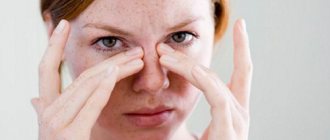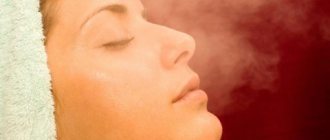The bath is an effective way of intensively influencing the human body with high temperature and high humidity. It is well known that the ritual of warming up and washing has a powerful healing effect.
But before you begin health procedures, you need to find out for whom a bath is contraindicated in order to prevent possible unpleasant consequences.
What is the benefit
Frankly speaking, there are a lot of benefits.
- Bath procedures have a positive effect on the effects of stress, fatigue, and improve sleep.
- In the bath, the skin is cleansed of bacteria, which helps renew the epidermis. New cells contain up to 70% moisture, while keratinized cells contain about 10%.
- In the bath, blood vessels, especially small ones, expand. This means blood circulation improves, which leads to increased tissue nutrition.
- Muscles relax, circulation of interarticular fluid increases. That is why the bath is useful for diseases of the musculoskeletal system, including joints.
There is an opinion that thermal procedures help cleanse the body of waste and toxins. How can this happen? The mechanics are like this. There are from 2 to 5 million sweat glands on our body; there are about 400 of them per 1 square centimeter on the palms and soles. In the bathhouse, the sweat glands remove moisture through the skin with the same intensity as the kidneys. During one visit, a person loses from 500 to 1500 ml of fluid. It contains toxic substances.
Diseased heart
The principle of the effect of bath procedures on the body is that with a sharp increase in body temperature, the blood vessels dilate, and the actively working heart begins to pump blood through them several times faster. And at the end, the reverse mechanism is activated, the heart calms down, the pressure returns to normal and the blood vessels narrow.
If the heart muscle is in perfect order, then this effect is perceived by the body as a useful workout. And it’s a completely different matter if a person has cardiac problems. The heart may simply not cope with the increased load, which leads to various kinds of irreversible consequences or even death.
For people who have suffered a myocardial infarction, stroke, or suffer from inflammation of the coronary vessels, tachycardia and hypertension, the bath is strictly contraindicated.
When a steam room is contraindicated
“Fever is a reason to refuse to go to the bathhouse. Going to a steam room in such a state is like putting a hot pie in a hot oven. Another absolute contraindication is if the cold does not go away within 10–14 days and is accompanied by a temperature of 37.2–37.3 degrees. In this case, it is healthier and safer to hover your legs. During this procedure, the blood vessels dilate, which has a positive effect on the condition of the lungs and respiratory tract.”
© iStock/Getty Images
What diagnoses should you not go to the bathhouse with?
- Exacerbation of chronic diseases of the lungs and bronchi, bronchial asthma,
- Acute infections
- Severe liver diseases,
- Exacerbation of peptic ulcer disease,
- Severe form of diabetes mellitus,
- Thyroid dysfunction
- Glaucoma,
- Epilepsy.
“It is necessary to refrain from visiting the bathhouse during a crisis of hypertension (with an increase in pressure up to 200 mm Hg), coronary heart disease, severe vascular atherosclerosis, chronic heart failure, severe arrhythmia, thrombosis or a tendency to bleeding,” says Mehman Mamedov . “People over 70 years old and those who do not tolerate changes in temperature and humidity should not go to the steam room.” In addition, phlebologists prohibit the bath for their patients - if you are prone to varicose veins, you need to be careful with thermal procedures. You should also be careful after certain procedures with a cosmetologist: Botox injections, for example, or placement of threads.
Additional restrictions for visiting the bathhouse
In addition to poor physical health, carbon monoxide poisoning and overheating can be reasons for refusing to visit the steam room.
Poisoning by fuel combustion products during the operation of a sauna stove is a common occurrence. This may be due to violation of equipment operation rules or the use of low-quality fuel material.
An equally dangerous factor when visiting a bathhouse is overheating of the body. People who are unprepared or in poor health do not need to exceed the permissible time spent in the steam room.
The main signs of overheating are mild dizziness, sudden changes in blood pressure, nausea, vomiting and fainting.
If such signs appear every time you visit the steam room, it is better to refuse bath procedures.
It is not advisable to visit the sauna while under the influence of alcohol or drugs, on a full or empty stomach, or after surgery.
Unprepared people should begin procedures with caution, gradually warming up the body, rising from the lower tiers to the upper ones, where the air masses are heated to the maximum.
Bath rules
“You shouldn’t eat too much before going to the steam room; it’s difficult for the body to simultaneously digest food and adapt to high temperatures. It is advisable that two hours pass from the moment of eating. Before the bath and for some time after it, you should not eat fish or meat. At high temperatures, the process of juice secretion and fermentation is activated in the intestines, and the proteins in it begin to decompose. Vegetables and cereals are recommended. To replenish fluid loss, you need to drink a lot, preferably freshly squeezed juice or tea. You should enter the steam room with your head covered so as not to overheat it. The optimal temperature is 60–80 degrees.”
© Westend61 / Getty Images is it possible to go to the bathhouse with a temperature of 37
An indicator of normal well-being after a bath should be an even pink skin color. If red spots appear, it means overheating has occurred and blood circulation has been disrupted.
“You need to get used to the heat gradually. It is better that each procedure lasts no more than 5–10 minutes. You also need to not cool down sharply, reminds Galina Tarasova . — After a bath, dousing with ice water, jumping into an ice hole or a snowdrift are contraindicated. Contrasting changes in temperature are dangerous, since under the influence of steam the vessels of the entire body and head expand. If you cool quickly, they will narrow and all the blood will rush to the head.”
Which sauna is better?
I was once asked: which bathhouse is better? But to answer this question, you need to know for what purpose you are going to the bathhouse - to wash, take a steam bath, lose weight, take a break from a busy day at work, relieve fatigue and psycho-emotional stress after physical or mental work. Or maybe your goal is to improve your health or strengthen your body?
The main place in the bathhouse has always been considered that part where there is a stove, from which the air is heated to the desired temperature, and the shelves on which they sweat and steam with brooms. Usually this room is called a steam room, sweat room, steam room. However, the steam room was not called that because it is heated by steam. For example, dry-air chambers that are designed for sweating are also called steam rooms, steam rooms, but the air in them is dry (heated by an electric furnace or hot air supplied through pipes).
Currently, many different shapes, types and designs of steam baths are known. But they can all be divided into three main types, depending on the temperature and humidity in the steam room:
- dry-air baths (urban public sauna-heater, Russian, sand, Finnish sauna, etc.) with air temperature from 60 to 120 °C and air humidity from 5 to 25%;
- damp baths (steam room, Russian, Finnish, etc.), the air temperature in which ranges from 50 to 70 °C, and humidity - from 80 to 100%;
- water, or Japanese, baths.
Each of these types of baths has its own advantages (as well as disadvantages, which, however, can be compensated for).
In an ordinary city bathhouse, a stove-heater is used to heat the air, which is heated by gas, coal, wood or fuel oil and in which there are red-hot stones or metal bars - a small amount of water is poured onto them, if necessary. If you do not add water, such a sauna is close in performance to a dry air sauna.
In a modern Finnish bath-sauna, the source of heating the air is a special electric stove with central control and a thermostat, with the help of which the air temperature in the steam room is regulated. By watering stones specially placed here or just walls and ceilings, you can lower the temperature and significantly increase (up to 70–80%) humidity. The bathhouse will become damp, you can steam in it with a broom.
A raw (steam) bath is heated by hot steam flowing through pipes. You should not stay in such a bath for more than 20–30 minutes, otherwise you will feel—sometimes not immediately, but after two or three hours—fatigue, and your physical and mental performance will decrease for some time.
Long-term observations show that relatively dry baths, in which the air temperature is 90-120 ° C and humidity up to 25%, bring the greatest health benefits. Those who like to steam with a broom will object that with this mode the broom will dry in 1.5–2 minutes, the leaves will become like parchment paper and fly off. To prevent this from happening, and to prevent dry air from drying out the mucous membrane of the nasopharynx (which is unpleasant and unhealthy), the steam room should be moistened, but not overdo it with moisture, turning the bathhouse into a damp one.
And yet, which bathhouse is better?
A certain Eastern sage is credited with the following answer to this question: “The best bathhouse is one that was built a long time ago, is spacious and has soft water.” Another added: “And the one where the firebox of the furnace is lit according to the nature of those who want to enter it.” Wise words! And I am deeply convinced that skillful and correct use of any bath (steam, dry, wet) improves health, strengthens the body, creates a cheerful mood, increases vitality and promotes mental and physical performance.
Now let’s take a short historical tour of the baths of different cultural traditions.
How to lose weight in a bathhouse
Yes, that's possible! But at the same time you will have to follow several rules - however, they are quite simple.
- To lose weight using a bathhouse, you need to go there twice a week.
- The bath day should be a fasting day.
- Enter the steam room according to the rules: first three minutes on the bottom shelf, then on the middle one, then a warm shower and rest. There are 3-4 such cycles. The broom can be used only after the second entry into the steam room.
- Make masks for the face and body - for example, fat-burning ones for problem areas. You can read more about this at the link.
- Don't forget to drink! Herbal tea is best.
↓ expand ↓
Contraindications by disease category
The steam room has a negative effect on the human body when there are diseases of internal organs and systems.
Cardiac system
Procedures are especially dangerous for people with serious heart pathologies. High temperatures and high humidity contribute to a significant expansion of capillaries and blood vessels, which can lead to heart overload, hypertensive crisis and thrombosis.
Respiratory system
Warmed air helps improve the functioning of the respiratory system, the mobility of the intervertebral discs, and strengthens the lungs. However, people who have:
- inflammatory diseases of the respiratory system;
- oncology with metastases;
- open tuberculosis;
- chronic respiratory diseases with stress on the heart.
Kidneys and urinary tract
Visitors who have minor kidney problems can improve their physical condition through sauna treatments. Such a rest will provide maximum relaxation and relieve stress on the kidneys.
It is strictly prohibited to visit the steam room if you have the following diseases:
- nephritis of the kidneys and ureters in acute form;
- stones in the kidneys and ureters;
- serious kidney pathologies with impaired kidney function;
- malignant formations;
- disturbances of water and electrolyte balance.
Liver and gallbladder
High temperatures and high humidity help relieve the liver and gallbladder, which leads to improved biochemical processes in the organs. But if there is urolithiasis, malignant formations, stones, nephritis or cirrhosis, in this case the bath is contraindicated.
Gastrointestinal organs
In conditions of high humidity and hot air, the functioning of the stomach and intestines improves, which promotes detoxification of the body. In addition, comfortable warmth prevents the development of dysbacteriosis and flatulence.
Visiting a steam room is contraindicated in cases where there are:
- hepatitis and peptic ulcer in chronic form;
- cholelithiasis;
- diarrhea;
- enterostomy;
- malignant formations;
- bloody vomiting.
Skin
Visiting the bathhouse is contraindicated for people suffering from skin diseases. These include:
- eczema;
- rash of unknown origin;
- acute tuberculosis of the skin;
- psoriasis;
- erythroderma;
- mycosis;
- scleroderma with focal lesions;
- purulent rash;
- leprosy;
- viral skin pathologies.
Musculoskeletal system
Bath procedures will bring many benefits to people who often engage in sports or physical labor. Hot air helps relieve tension in muscles and joints, remove toxins and relieve pain.
It is not recommended to visit the steam room in the sauna and bath for people who have:
- arthritis and rheumatism in acute form;
- injuries and wounds;
- radicular syndrome of compressive type;
- discopathy.
Nervous system
In general, bath therapy has a beneficial effect on the central nervous system, promotes relaxation and relief from fatigue. But at the same time, it is worth completely eliminating the bath with contraindications, which include:
- epileptic seizures;
- myasthenia gravis;
- paralysis of the vascular system;
- Parkinson's disease;
- cerebral paralysis;
- autonomic-peripheral nervous dysfunction;
- migraine;
- low pressure.
Is it possible or not?
A pregnant woman's body
is so fragile that even the slightest adverse effect can negatively affect her health.
Doctors do not particularly allow such women to change the climate, fly on airplanes, play sports
and go to the bathhouse - they try to minimize the risk of losing a child or harming his health by abandoning bad external factors.
What are the threats?
-
If a woman has never visited a bathhouse before
, it is impossible to resort to this during pregnancy - the weakened body will experience enormous stress.
- Doctors do not allow visiting the sauna in the early stages
of an interesting situation - high temperature negatively affects the development of the placenta and the emerging life.
The organs of the future baby are just beginning to form,
so the steam room can provoke an abortion.
There are some contraindications for pregnant women to visit the bathhouse: - early stages of pregnancy;
- severe intoxication; - high blood pressure; - danger of miscarriage; - abnormal development of the fetus; - problems with previous pregnancies; - frequent contractions of the uterus.
Vegetovascular dystonia
With VSD, a visit to the steam room is often even recommended. But this should be done only after consulting a doctor and without ignoring common sense. After all, neglecting the rules can cause irreparable damage to the body.
In the bathhouse, the risk of overheating and disruption of the body's adaptive functions increases. Therefore, you need to monitor your response to heat stress. If nausea, dizziness, or tachycardia occur, it is better to leave the room. VSD, complicated by concomitant diseases, permanently closes the entrance to the bathhouse.
As we see, even such a useful invention as a bathhouse can pose a threat to human health and even life. Therefore, if you have the listed diseases, you should visit her only after consultation with specialized specialists.











